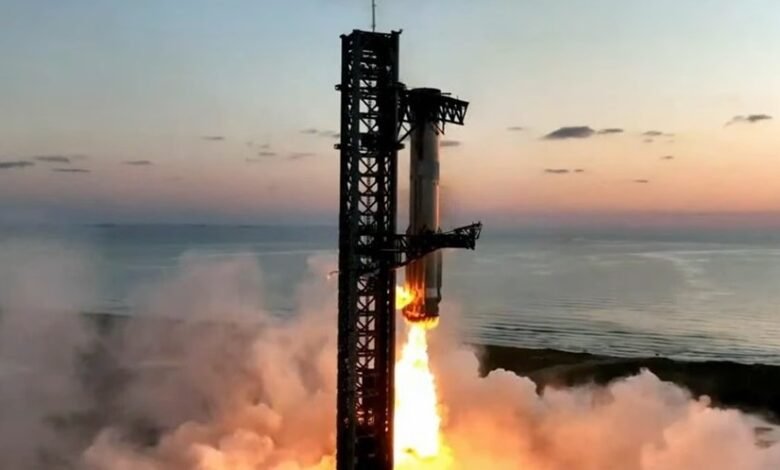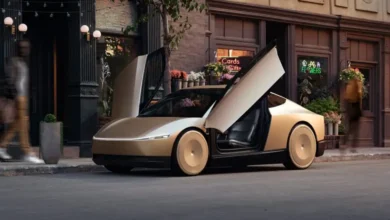
On October 13, 2024, SpaceX made headlines by achieving a groundbreaking engineering feat: the successful capture of its Starship rocket’s first-stage booster using mechanical arms, affectionately nicknamed “chopsticks.” This event marks a significant milestone in the evolution of reusable rocket technology and represents a leap forward in SpaceX’s mission to make space travel more efficient and sustainable.
The Launch: A New Era for Rocket Recovery
Early in the morning, at 8:25 AM EDT, the colossal Starship rocket launched from SpaceX’s Starbase facility in Boca Chica, Texas. Standing at nearly 400 feet (121 meters), this rocket is designed for reusability, aiming to facilitate rapid turnaround times for space missions. The launch was accompanied by a spectacular display as the Super Heavy booster, powered by 33 Raptor engines, ignited and ascended into the sky with a roar that resonated across the Texas Gulf Coast. Three minutes and forty seconds after liftoff, the Super Heavy booster detached from the Starship upper stage. As it began its descent back to Earth, engineers monitored its flight closely. The booster was programmed to execute a controlled landing maneuver, flipping around and reigniting its engines to slow its descent. This intricate sequence culminated in a hover just above the launch pad, where it awaited capture by the mechanical arms24.
The Catch: Mechanical Marvels in Action
The moment of truth arrived as the booster descended towards the launch pad. The mechanical arms—dubbed “Mechazilla” by fans—extended from the launch tower to catch the returning booster. This innovative design allows for a direct recovery process at the launch site, contrasting sharply with previous methods that relied on ocean landings or distant concrete pads. As the booster gently settled into the waiting arms, jubilant cheers erupted from SpaceX employees watching from nearby.Elon Musk celebrated this achievement on social media, declaring it “a day for the engineering history books.” SpaceX spokespersons echoed this sentiment, describing the event as “magic” and a pivotal step towards making life multi-planetary.
Significance of the Achievement
This successful catch not only demonstrates SpaceX’s commitment to advancing reusable rocket technology but also sets a new standard in aerospace engineering. The ability to recover boosters directly at the launch pad will significantly reduce turnaround times and costs associated with space missions. Historically, SpaceX has excelled in recovering smaller Falcon 9 boosters; however, capturing a larger Super Heavy booster represents an unprecedented leap forward.The implications of this technology extend beyond mere efficiency. With plans to use Starship for missions to Mars and lunar landings under NASA’s Artemis program, this achievement underscores SpaceX’s role in shaping the future of human space exploration.
Looking Ahead: Future Missions and Innovations
As SpaceX continues to refine its technology, future missions are expected to build upon this success. The company aims to develop fully reusable rockets capable of rapid re-launches, which would revolutionize access to space. With NASA’s interest in utilizing Starship for crewed lunar landings later this decade, the stakes are higher than ever.SpaceX’s relentless pursuit of innovation embodies its motto: “fail fast, learn fast.” This approach has allowed them to iterate quickly on designs and processes, leading to breakthroughs such as today’s successful catch4.
Conclusion
The successful capture of the Starship booster using mechanical arms on October 13, 2024, marks a historic moment not just for SpaceX but for space exploration as a whole. As we look toward an era where interplanetary travel becomes more feasible, this achievement serves as a reminder of what is possible when engineering ingenuity meets ambitious vision. With each milestone reached, SpaceX continues to pave the way for humanity’s journey into the cosmos.
For more tech updates, click here.
Connect with us on X/Twitter here.



